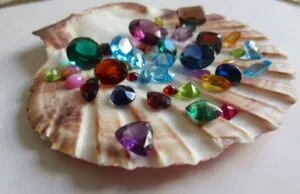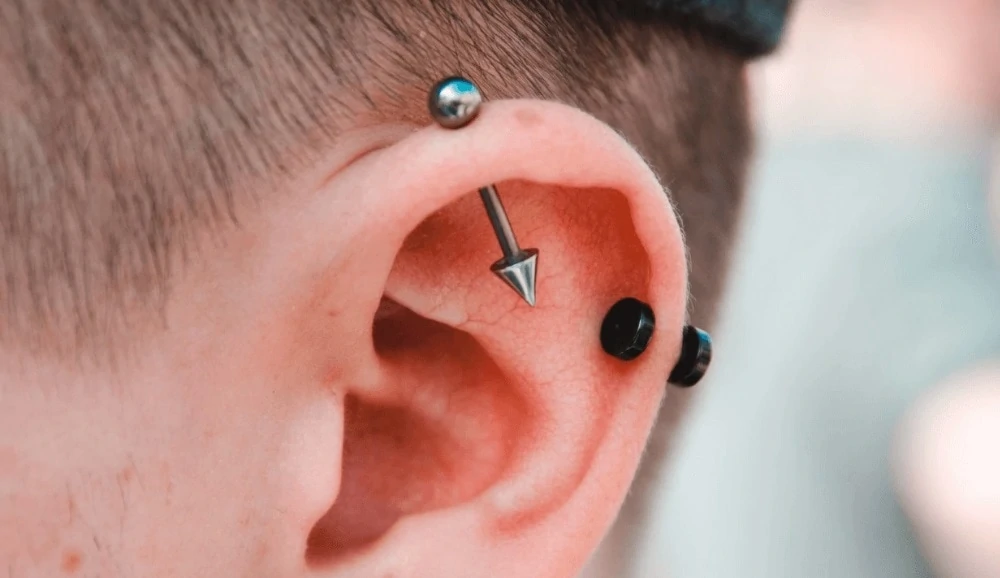
Table of Contents
Cartilage earrings have become a staple in contemporary jewelry, offering a blend of style and personal expression. Whether you’re new to the trend or looking to expand your collection, understanding the types, placement options, and care is crucial.
Here’s everything you need to know about cartilage earrings from the latest styles to care tips. Get ready to elevate your look!
What are Cartilage Earrings?
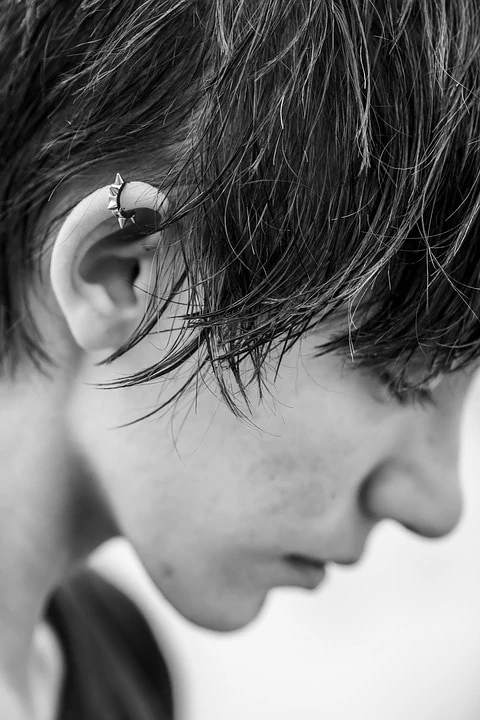
Cartilage earrings are a generic term for an earring worn on any part of the ear that isn’t the lobe. Cartilage is a type of connective tissue which is what the upper sections of your ears are made of. It’s tougher than skin but softer than bone and a lot thicker than your earlobes which makes it different in many ways to a regular ear piercing.
Cartilage earrings are also different from regular earrings in many ways.
They will generally be thinner, as a smaller gauge bar will be used to pierce the cartilage. Similarly, the wearable length of the barbell that goes through the cartilage is shorter than regular earrings because of the smaller spaces around the upper area of your ears.
Both body jewelry specialists and bespoke jewelers have caught onto the growing trend and have created an array of unique styles that can be worn in your cartilage. But before we get to styles, let’s learn a little bit more about how cartilage piercings are done and where you can wear your earrings.
Origin and History of Cartilage Earrings
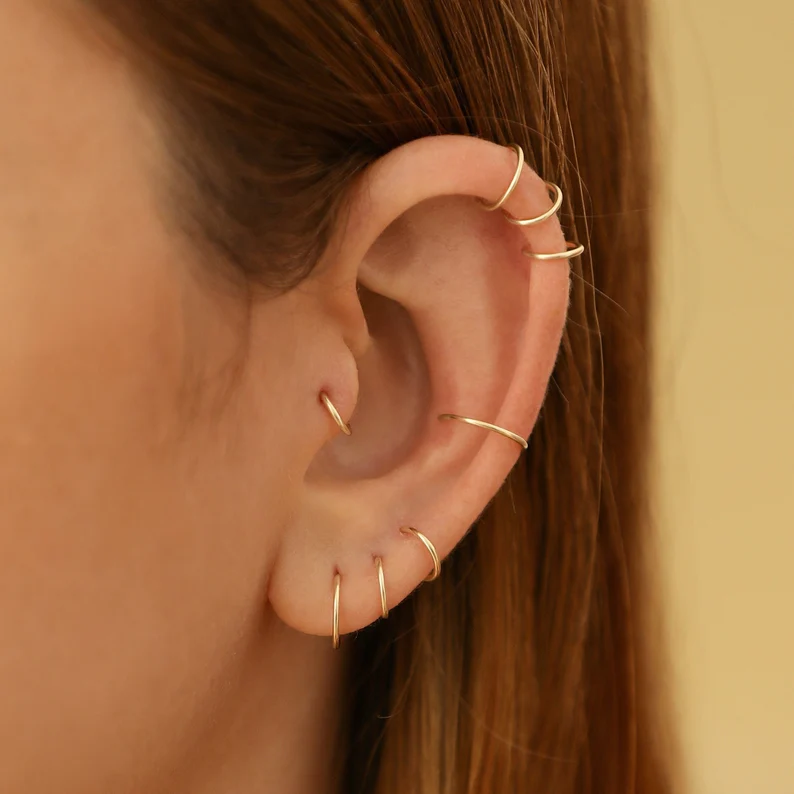
Cartilage earrings have a history that spans thousands of years across various cultures worldwide. Initially, people wore them not just for decoration but also for cultural, spiritual, and sometimes medicinal reasons.
In ancient Asia, Africa, and among indigenous American tribes, earrings made from materials like bone, wood, and stone signified social status, tribal identity, and spiritual beliefs. Ear piercing, including cartilage piercings, often marked the passage from childhood to adulthood in many cultures.
The use of cartilage earrings as a fashion statement became more common in the 20th century, reflecting individuality and personal style. The rise of cartilage earrings in Western fashion started with the punk movement in the 1970s and 1980s, symbolizing rebellion and non-conformity.
Since then, these earrings have moved from their countercultural beginnings to mainstream fashion, appealing to many for their beauty and as a form of personal expression. Cartilage earrings, from their ancient origins to their modern use, have continuously evolved while retaining their historical and cultural significance.
How is Cartilage Pierced?
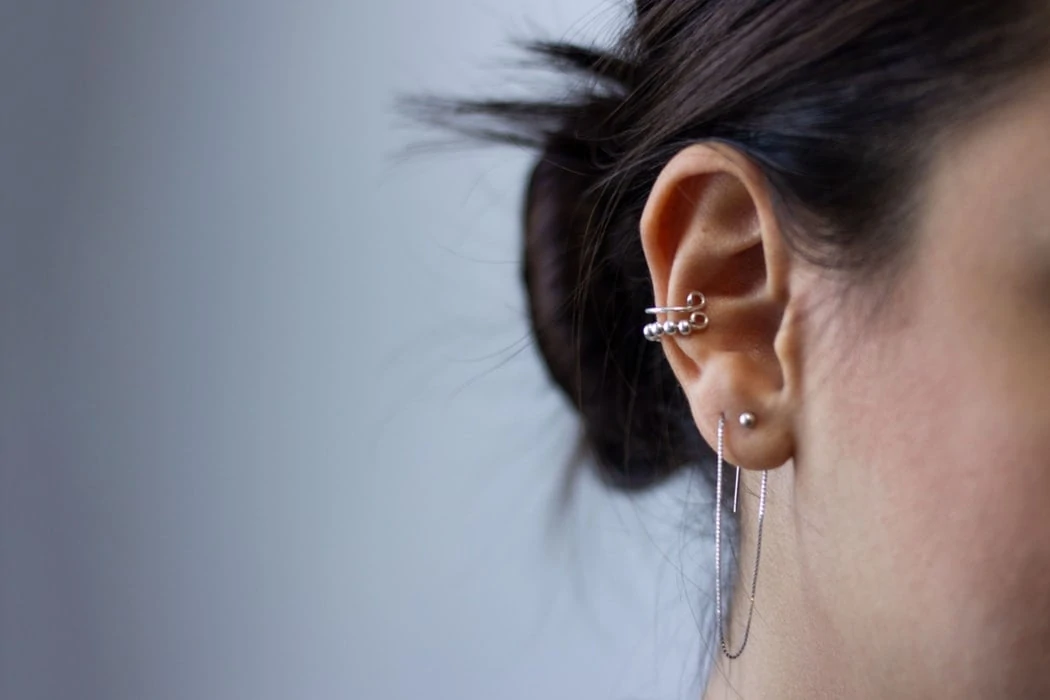
Cartilage is stronger than your earlobes which makes it more sensitive to pain. This is why cartilage should only ever be pierced with a needle and never a piercing gun.
A piercing gun shoots an earring through your ear to pierce it. Earrings are sharp, but not as sharp as a needle. The force of the gun and the resistance of your cartilage can result in trauma to the surrounding area. A needle, on the other hand, is sharper and more precise.
Your piercer will use a hollow needle to puncture your ear and insert your chosen earring into the piercing. Once that earring is in, it should stay in until the piercing is completely healed. This can take anywhere between three months to a full year, which is why you must put a lot of thought into the style of earring you purchase.
Cartilage Ear Piercing Placements
Below are the most common cartilage ear piercing locations going anti-clockwise from above the lobe.
1. Anti-Tragus Piercing
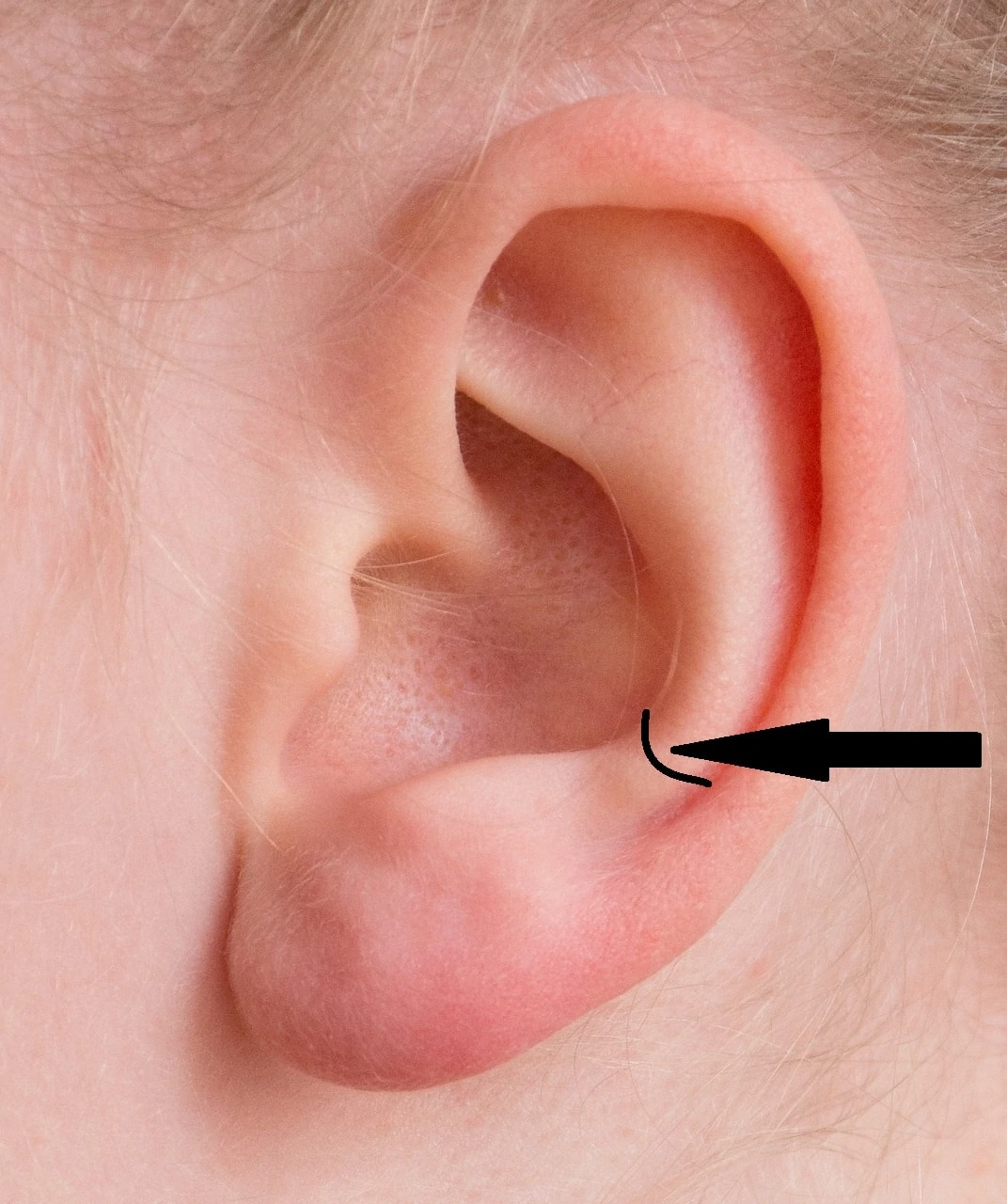
This piercing is located on the bump of cartilage directly above your earlobe towards the ear canal.
2. Snug Piercing
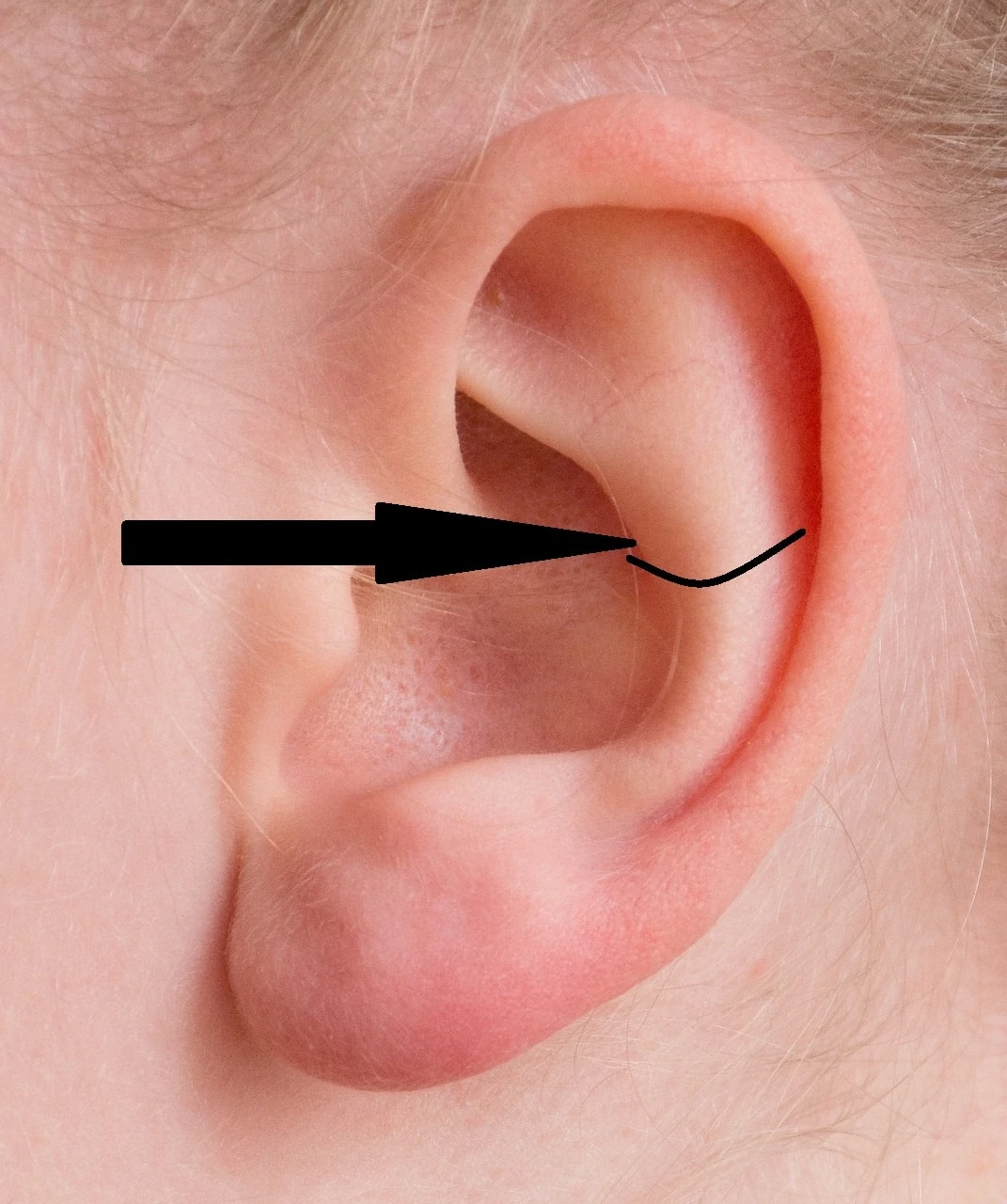
Snug piercings are directly above the anti-tragus on the inner section of your ear. They fit snugly into the outward curve of that section.
3. Inner and Outer Conch Piercings
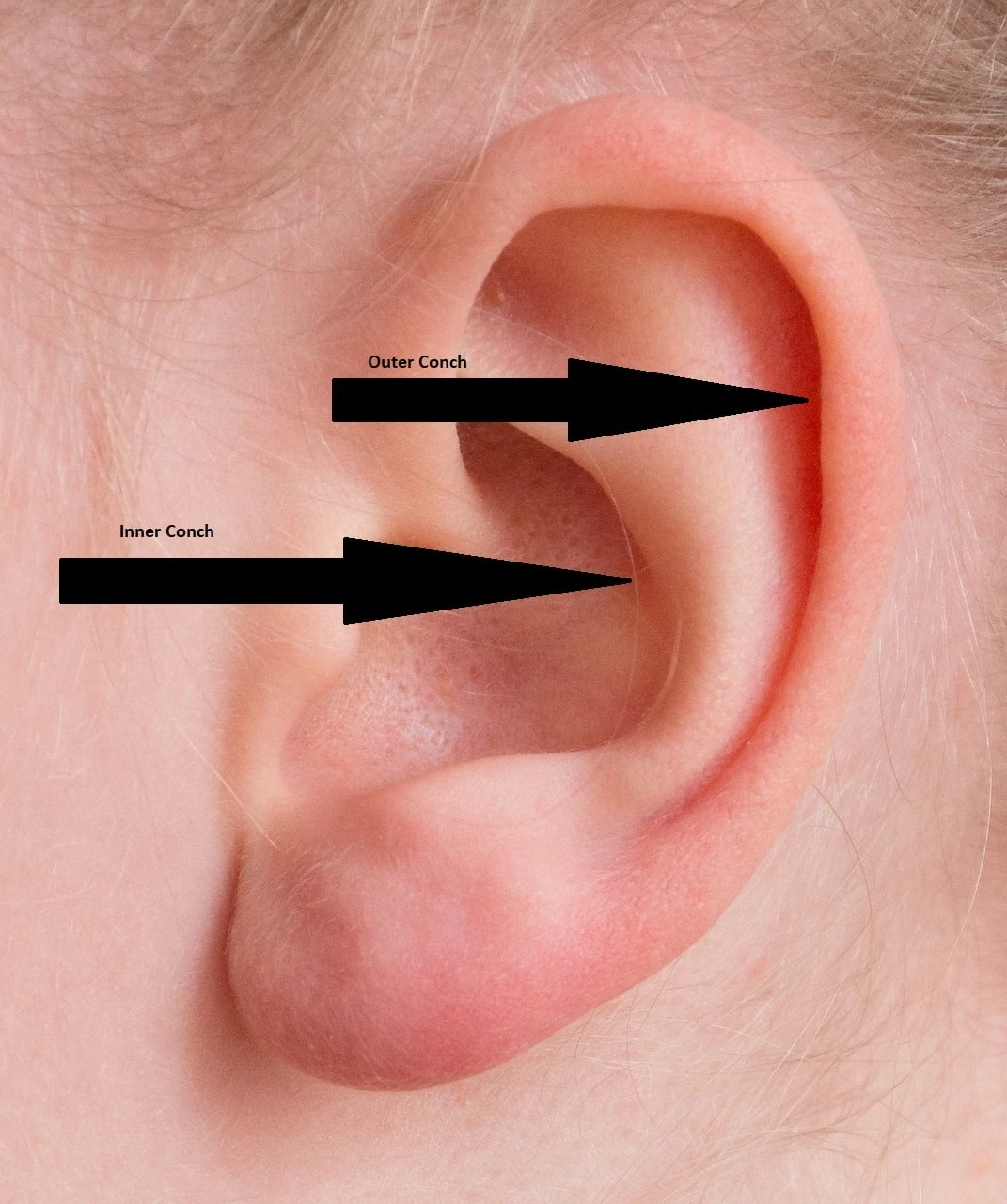
Inner conch piercings rest in the dip in the ear beneath the snug piercing. An outer conch piercing is located on the exposed cartilage under the curl of your upper ear. Like the Auricle, it is placed so that a stud earring can lay flat.
4. Auricle Piercing
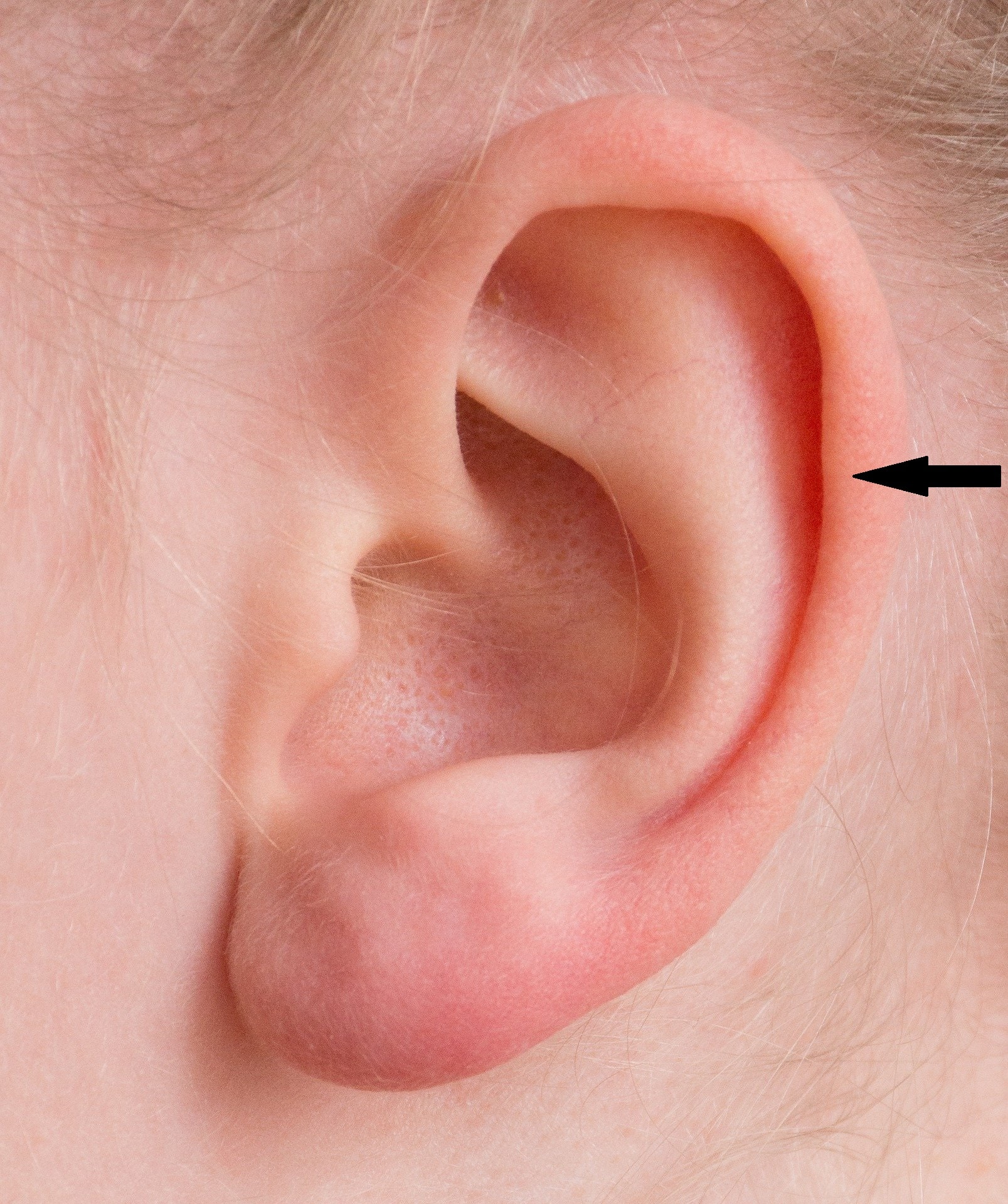
Auricle piercings are about halfway up the outer edge of your ear, however, the piercing is done just beside the curl so that a stud earring can lay flat inside your ear exiting at the back of your ear. It’s similar to the outer conch piercing.
5. Helix Piercing
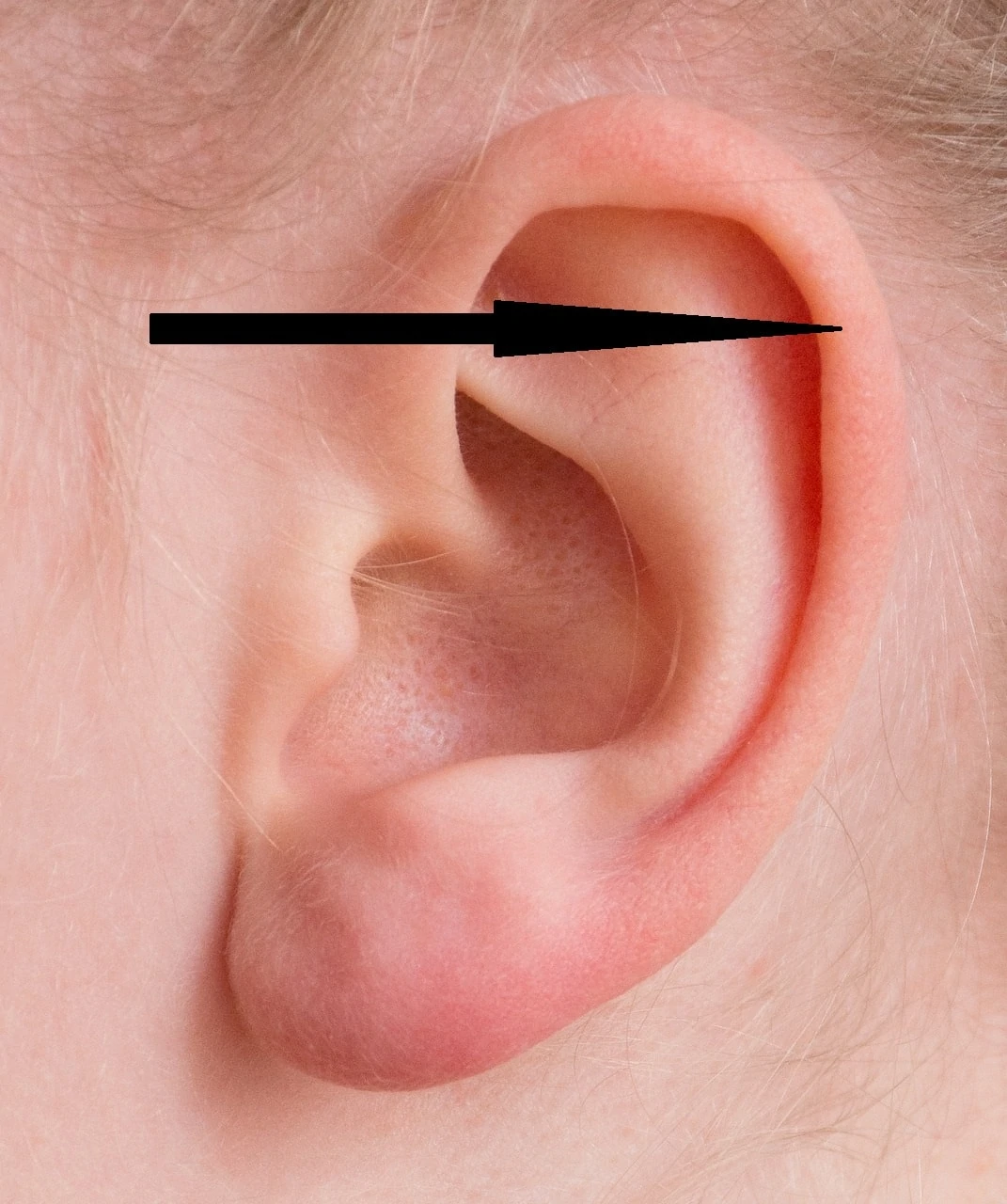
Helix piercings are located on the part of the cartilage that curls up along the top outer edges of the ear. Standard helix piercings pass through the cartilage once while industrial helix earring passes through the ear once at the helix and through the opposite inner curl of the ear. Helix piercings are higher and closer to the edge than an outer conch piercing.
6. Rook Piercing
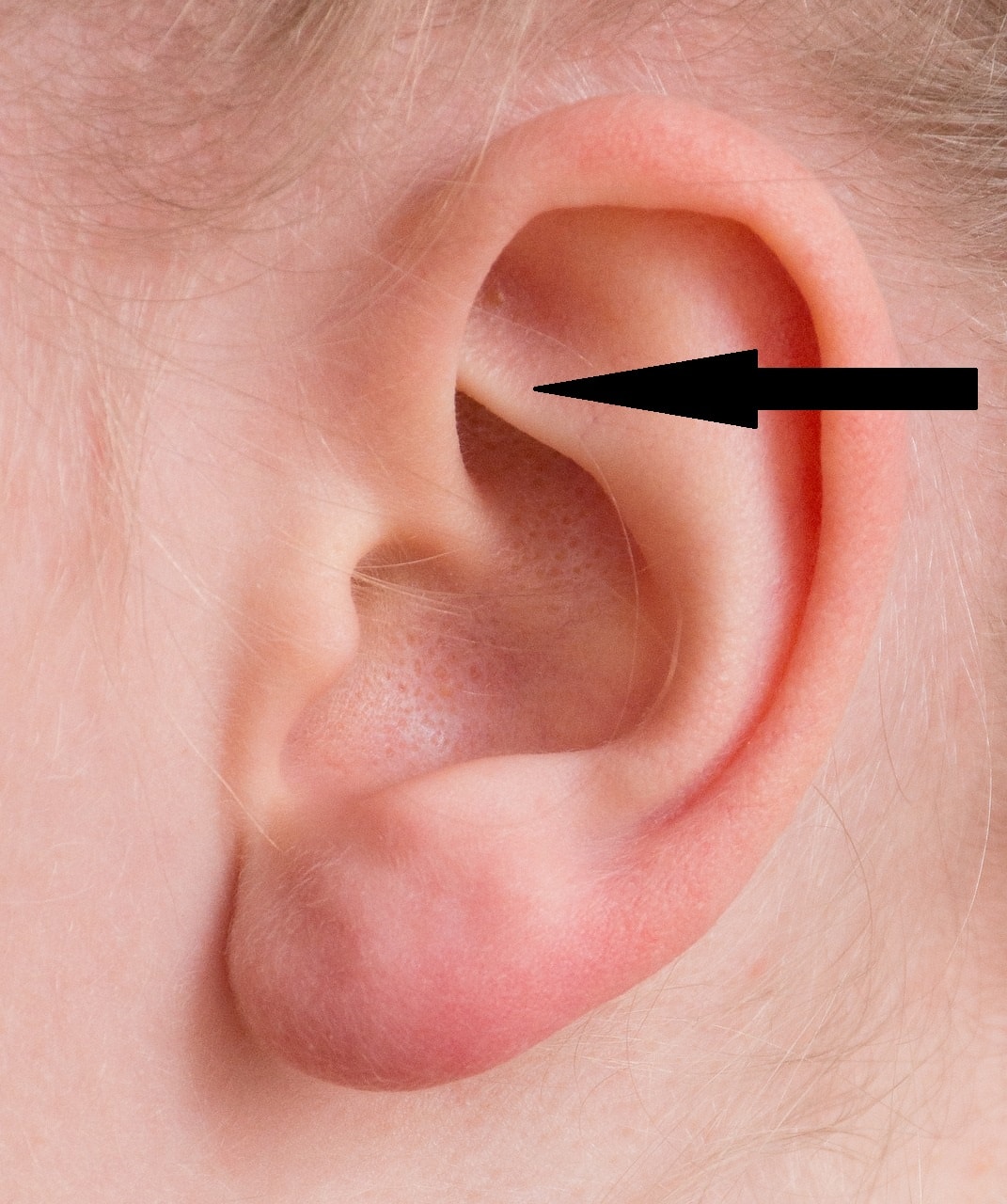
Your rook is the highest ridge of your inner ear and connects at the bottom of your ear to the inner conch. The piercing goes through the rook and both the front and back end of an earring is exposed.
7. Tragus Piercing
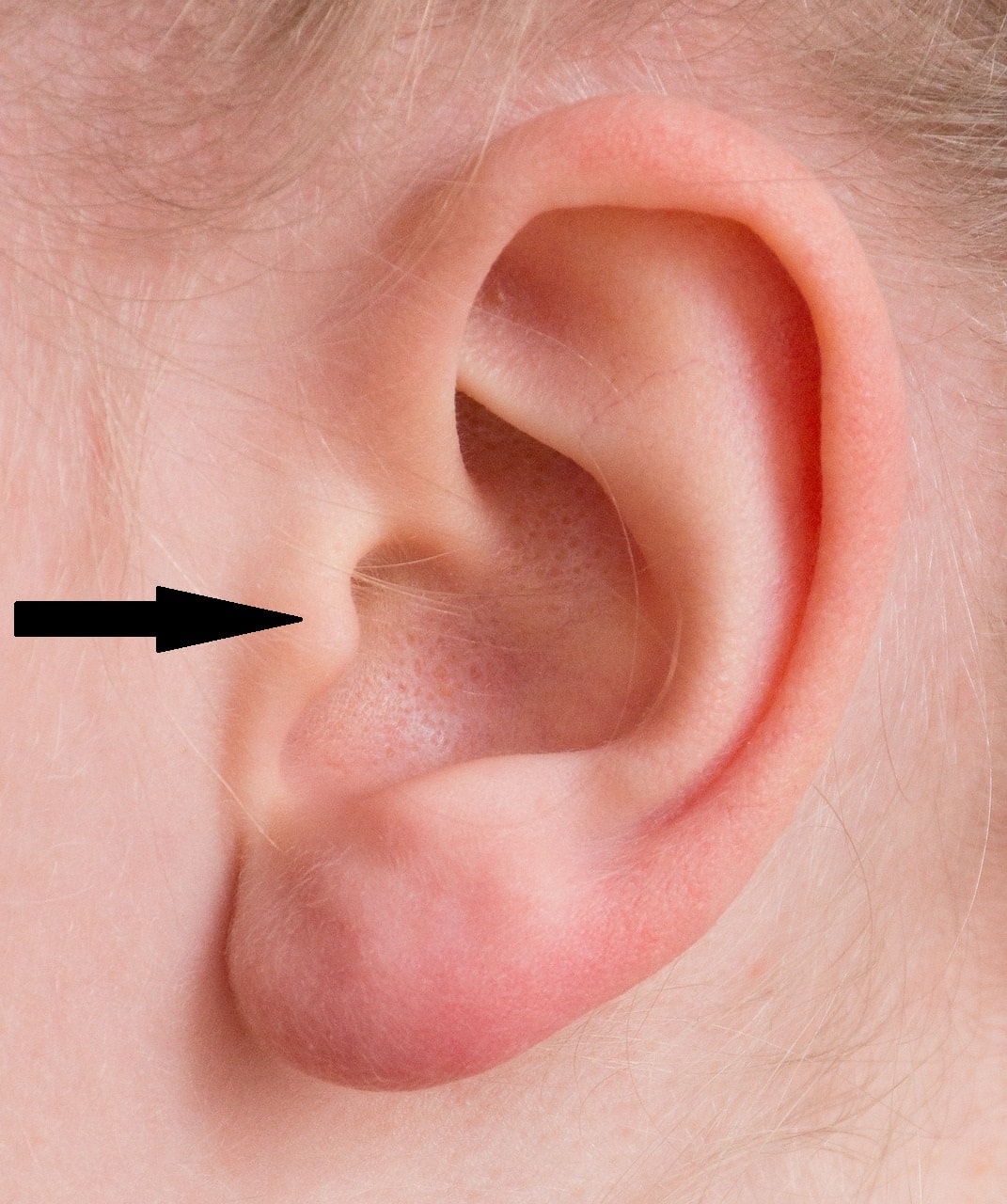
These piercings are in the small area of cartilage that juts out of the middle of your ear above the earlobe and close to the face.
Types of Cartilage Earrings
Let’s take a look at the most popular type of cartilage earring jewelry and the specific types of piercings they best suit.
- Hoop Earrings
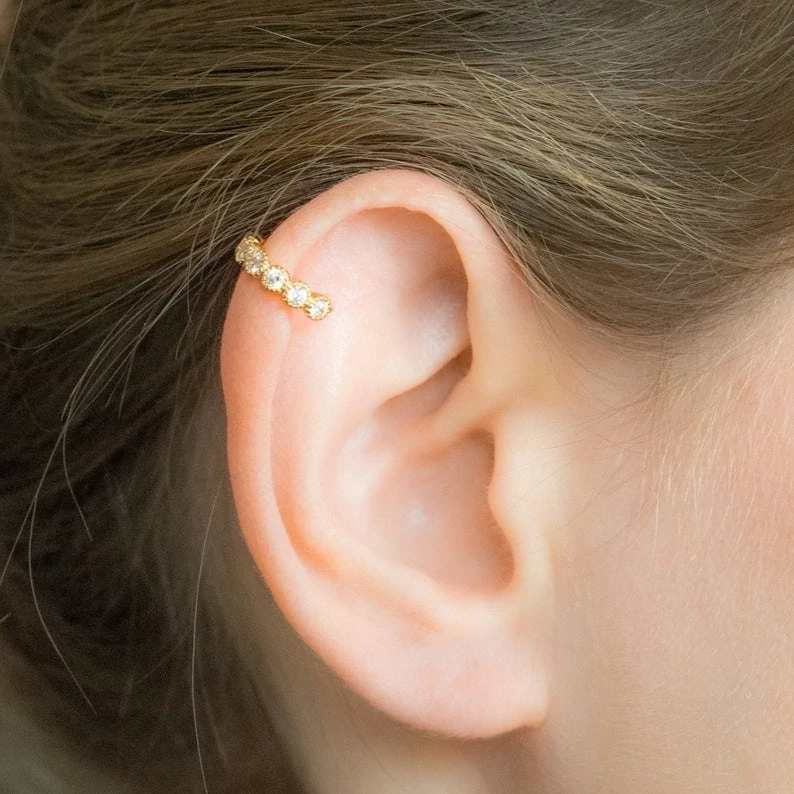
Hoops designed for cartilage piercings have smaller diameters to fit into the tight spaces higher on your ear. They are available patterned, plain or encrusted in stones. Hoop earrings are well suited for all cartilage piercings except the rook, outer conch, auricle and orbital. Although a small hoop earring can fit the snug or inner conch location, they face upward so the hoop will fall back down onto your ear.
- Captive Bead Rings
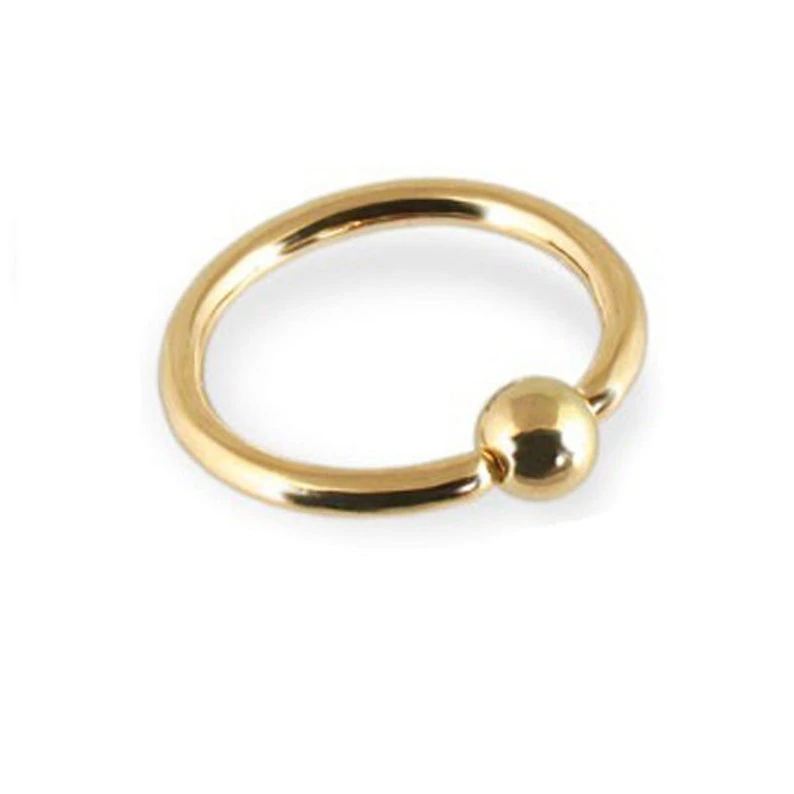
Captive beads are hoop earrings with a design focal point in the middle of the hoop. Traditionally this is a bead, however, modern designs showcase the focal point with exquisite soldering and metal work. Captive beads suit the same cartilage piercings as hoops.
- Labret Studs or Posts
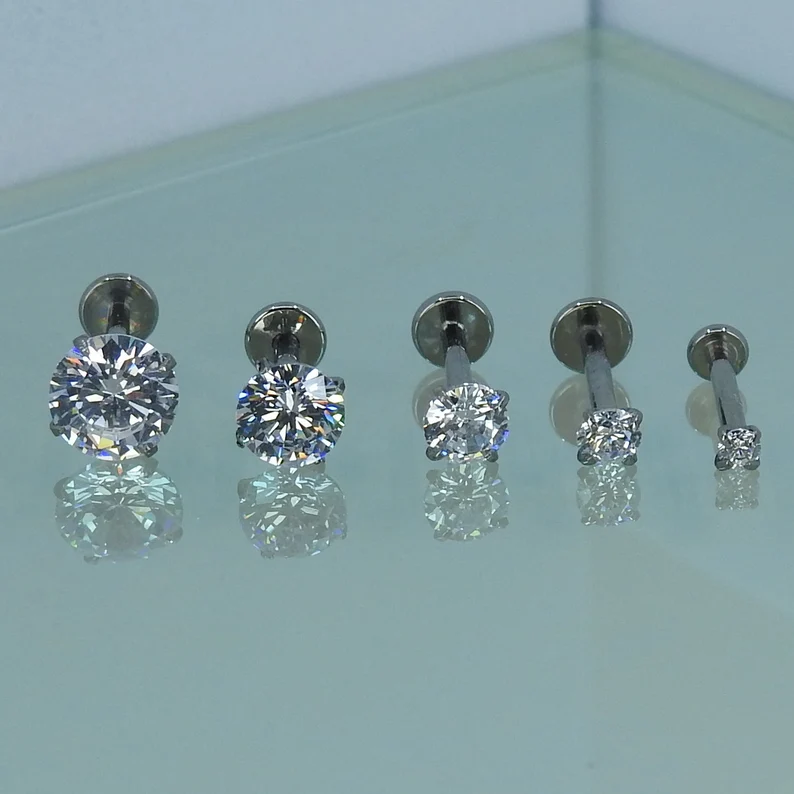
Labret studs are similar to those worn in earlobes but are generally shorter and have a flat back for comfort. They come in a variety of designs from a ball of plain metal, precious stones or quirky shapes. Posts or studs are well-suited to all cartilage piercings, apart from rook or orbital piercings as these showcase the back of the post.
- Dangling Cartilage Studs
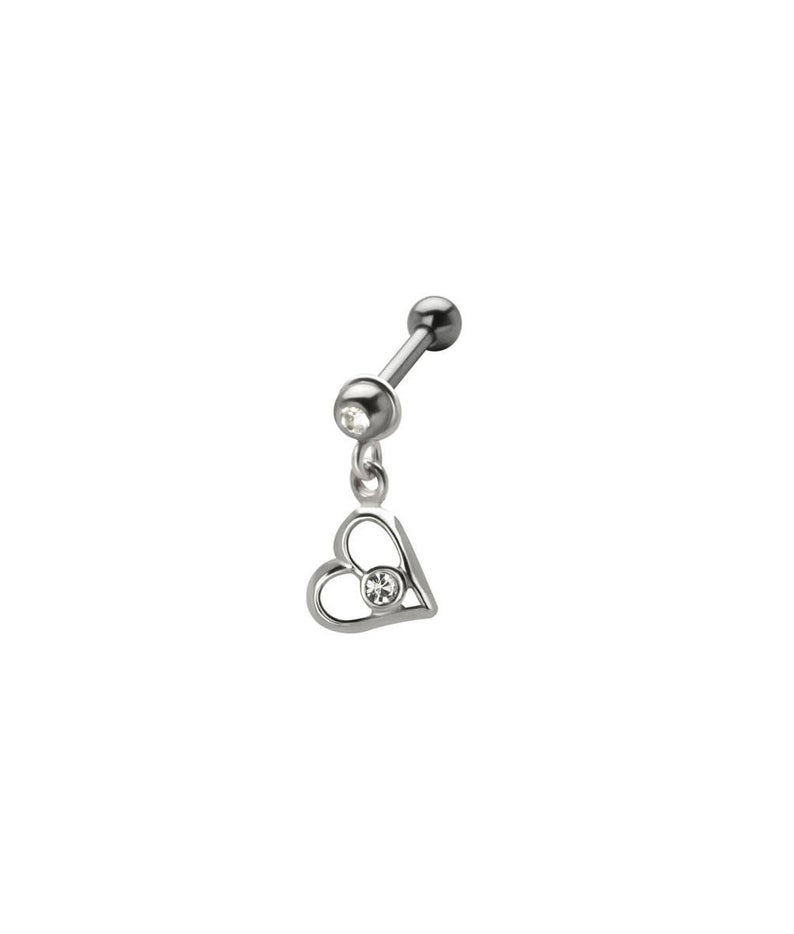
Dangling cartilage studs are the same as regular posts or studs but feature a small dangling charm at the front. They achieve the same look as dangling hook earrings worn on ear lobes, but a post fixture secures them to upper ear placements.
- Wide Cartilage Studs
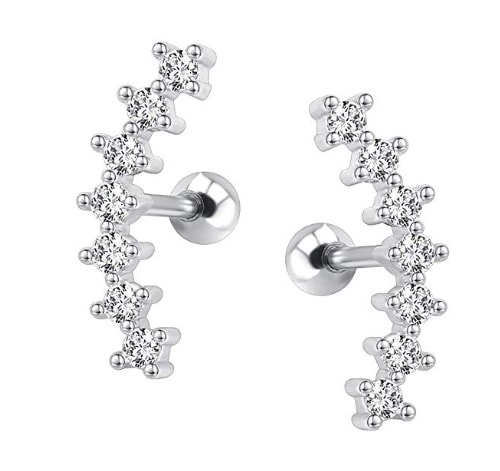
If you like the look of multiple earrings but only want one piercing, wide cartilage studs are a great choice as they feature long crawling designs to mimic the look of multiple piercings. They perfectly suit piercings on the outer and upper ear such as outer conch, auricle, and helix piercings.
- Cartilage Shields
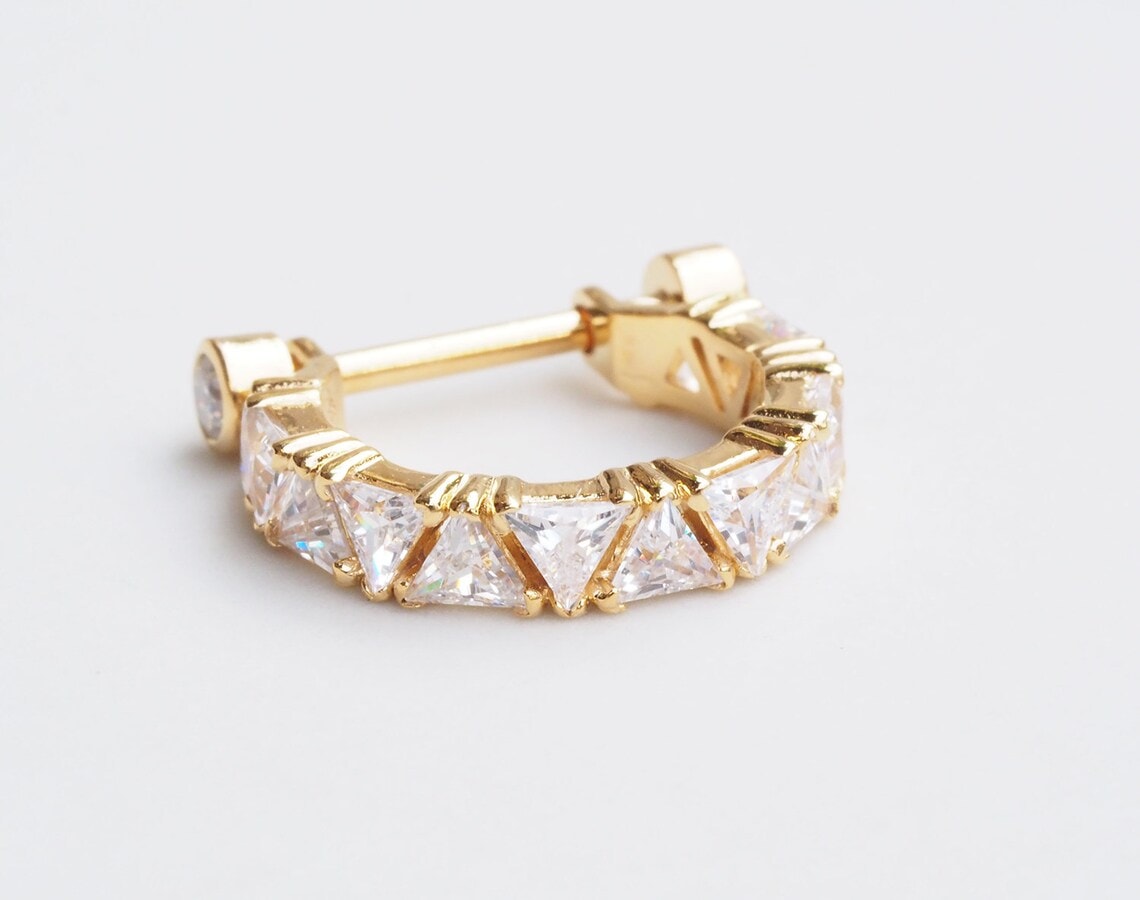
Cartilage shields have the same look as a cuff but pass through an ear-piercing. They’re more secure than a cuff and can be worn lower along the helix as they won’t slip off. Cartilage shields are best suited for the helix area.
- Cartilage Chain
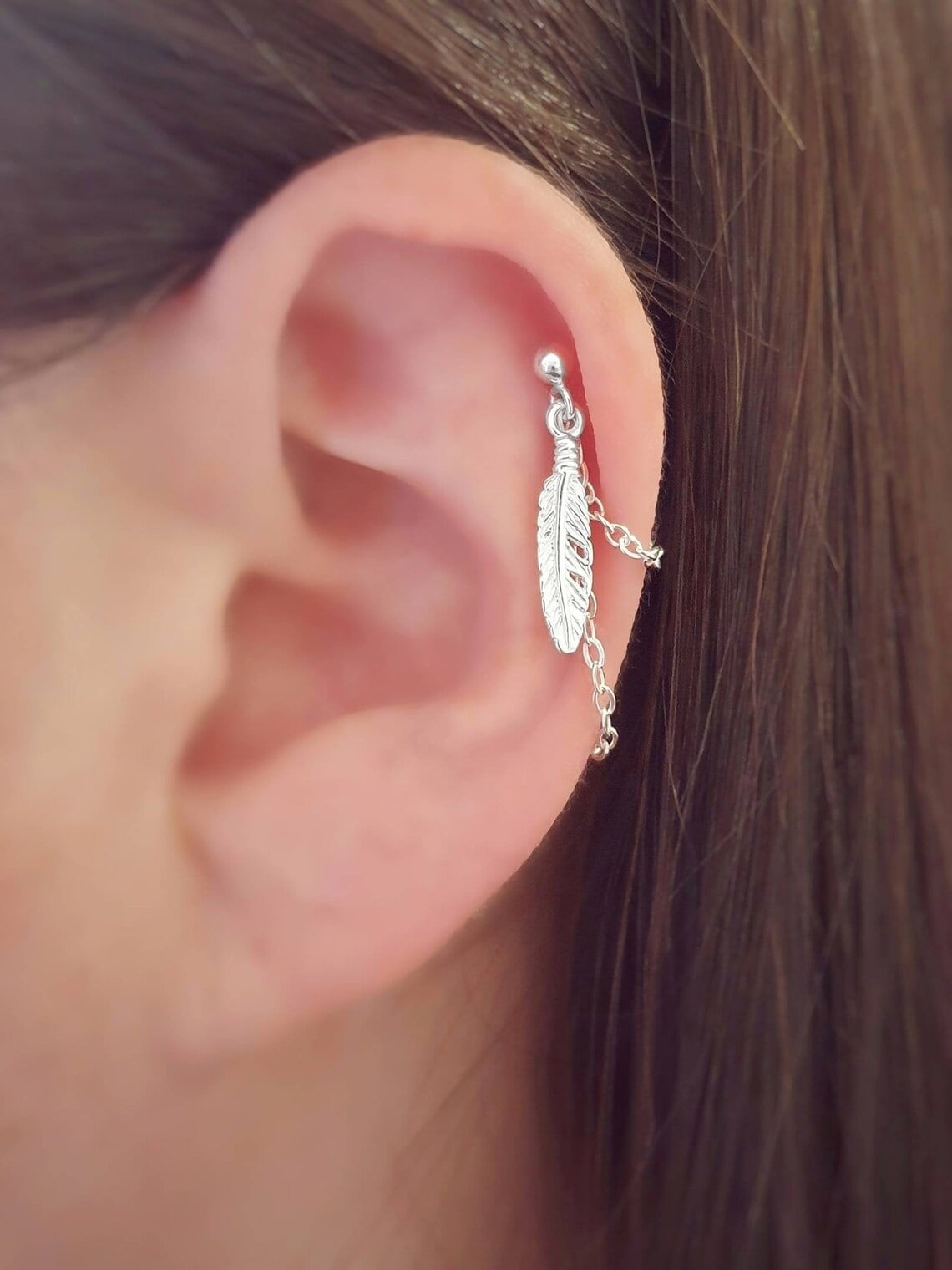
Cartilage chains are two separate earrings, either studs or hoops connected with a chain. A cartilage chain can be used to connect any two piercings depending on the length of the chain but works best on outer ear piercings as the chain will fall away from your ear canal.
- Barbells (Straight, Curved, Circular)
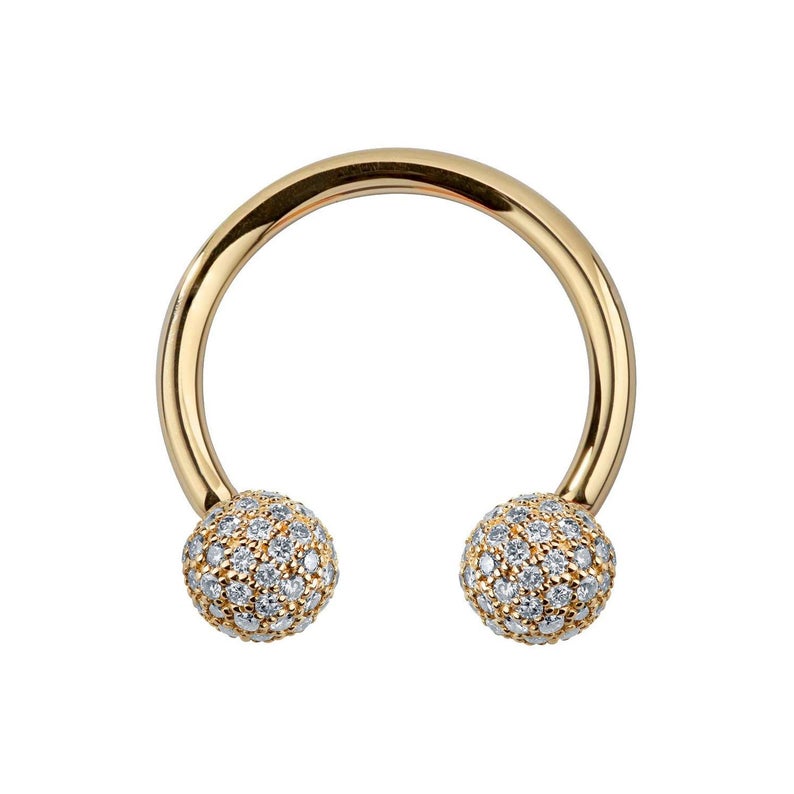
Barbell jewelry come in three variations – straight, curved or circular are studs or posts that are designed to show at both ends. There is either a stone, ball, or charm on one end and a threaded ball on the other. Barbells suit most type of ear piercings, depending on the variation you choose.
- Multiple Piercings (Constellation Piercings)
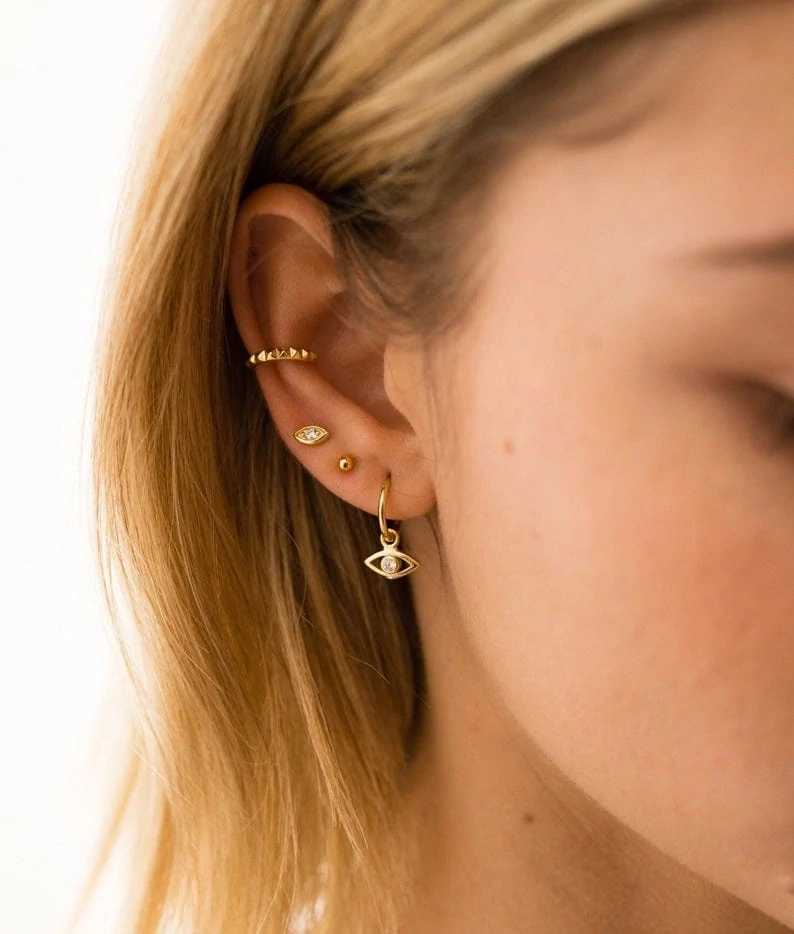
Constellation piercings are multiple cartilage piercings that come together to create one cohesive look. They can consist of upwards of four cartilage piercings in one ear, all with different but complementary earring designs. Constellation earrings tend to be more minimal as the main focus of the design is how all the earrings look when worn together.
Curated cartilage piercings on the other hand, are more focused on how earrings and piercings compliment a specific person’s ear shape.
While constellation and curated piercings look beautiful, getting more than three cartilage piercings at one time is generally not recommended. This is especially true if you are a first timer as too many piercings at once can irritate and confuse your immune system – which remember, will be dealing with new foreign material in your body and the trauma of a piercing.
It’s also a good idea to stagger even two or three piercings if you haven’t had your cartilage pierced before, or if the piercings are close together as this will be much more painful than getting only one.
Where to Buy Cartilage Earrings
When considering purchasing cartilage earrings, Amazon and Etsy offer distinct shopping experiences.
- Amazon is known for its vast selection, providing a wide range of styles, materials, and price points. This variety ensures that you can find earrings that suit your taste and budget. The platform’s user-friendly interface, combined with detailed customer reviews, makes it easier to gauge the quality and suitability of earrings.
- On the other hand, Etsy stands out for its unique, often handmade or artisanal cartilage earrings. Shopping on Etsy means you’re likely supporting individual artists or small businesses, and you have the chance to find truly one-of-a-kind pieces. Many Etsy sellers also offer customization, allowing you to tailor earrings to your specific preferences.
Wrapping Up
Cartilage earrings go beyond fashion; they express your unique style and personality. Whether you choose Amazon for its wide range and convenience or Etsy for its one-of-a-kind, handmade pieces, there’s a perfect pair for everyone.
With proper care and selection, these earrings become a comfortable, stylish, and significant part of your jewelry, showing off your individuality and boosting your personal style.







